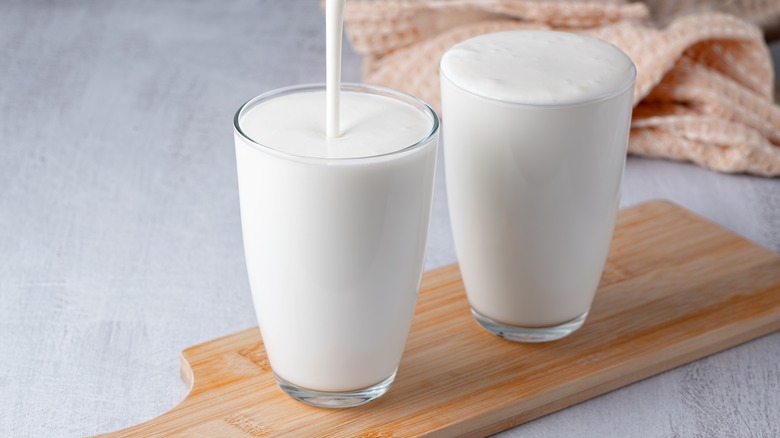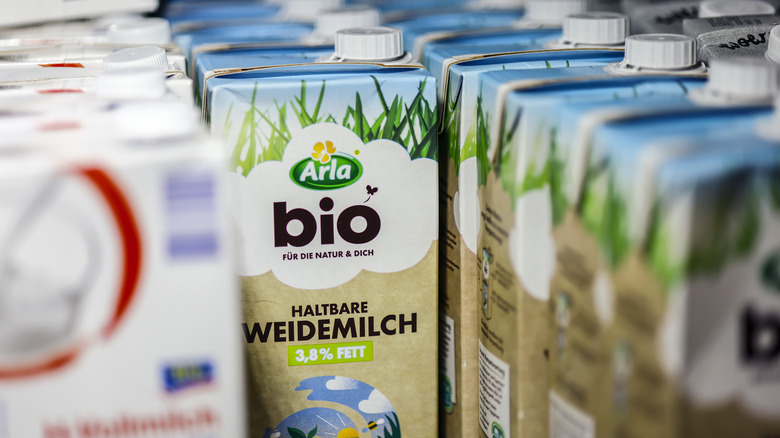The Reason Aseptic Milk Isn't Sold In The Refrigerated Section
There is no place that holds equal parts horror and delight like a grocery store in a foreign country. Americans, used to over-packaged, pre-sliced, and heavily-refrigerated food items, are often shocked to encounter naked fruits, whole loaves of bread, and entire animal carcasses hung where all can see. But most unsettling of all, particularly in countries like France, are the rows of unrefrigerated milk cartons that make foreigners do a double take. Were they left out by accident? Has something gone terribly wrong? Fret not, travelers. That's exactly where they're supposed to be.
Shelf-stable milk is known as aseptic milk or ultra-pasteurized milk. While popular in Spain, Germany, and France, it is getting easier and easier to find in the United States. The popular American milk brand Horizon Organic, which can be found in most grocery stores and even at Starbucks, is one common example of shelf-stable milk.
Aseptic milk is a modern marvel, since it's easier to transport than normal milk because it doesn't require refrigerated trucks or storage rooms, which also means it has a smaller carbon footprint than other milks thanks to its lower energy usage. But if that seems too good to be true, there's a simple explanation.
What is shelf-stable milk?
Milk that comes straight from a cow with no processing is known as raw milk, which is generally considered unsafe to drink because it can easily be contaminated with bacteria like E. coli or Salmonella. It is illegal to sell raw milk in more than half of U.S. states, so the milk that you buy at the grocery store has generally been pasteurized. This likely means that it has gone through a process called High Temperature Short Time (HTST) pasteurization, where milk is heated to a minimum of 161° F for at least 15 seconds, and then rapidly cooled.
Aseptic milk goes through Ultra High Temperature pasteurization (UHT), where it is heated at a higher temperature for a shorter time, at least 280° Fahrenheit for two seconds. The packaging of aseptic milk is also sterilized using hydrogen peroxide, which is then removed before use. The combination of high temperatures and sterile packaging prevents the otherwise low-acidity dairy product from vulnerability to bacterial infection.
Despite the additional processing, aseptic milk doesn't taste any different from its standard pasteurized brethren, and it's far more practical. Aseptic milk can last for up to six months in your pantry, but it does need to be refrigerated after opening, and should be consumed within a week.

